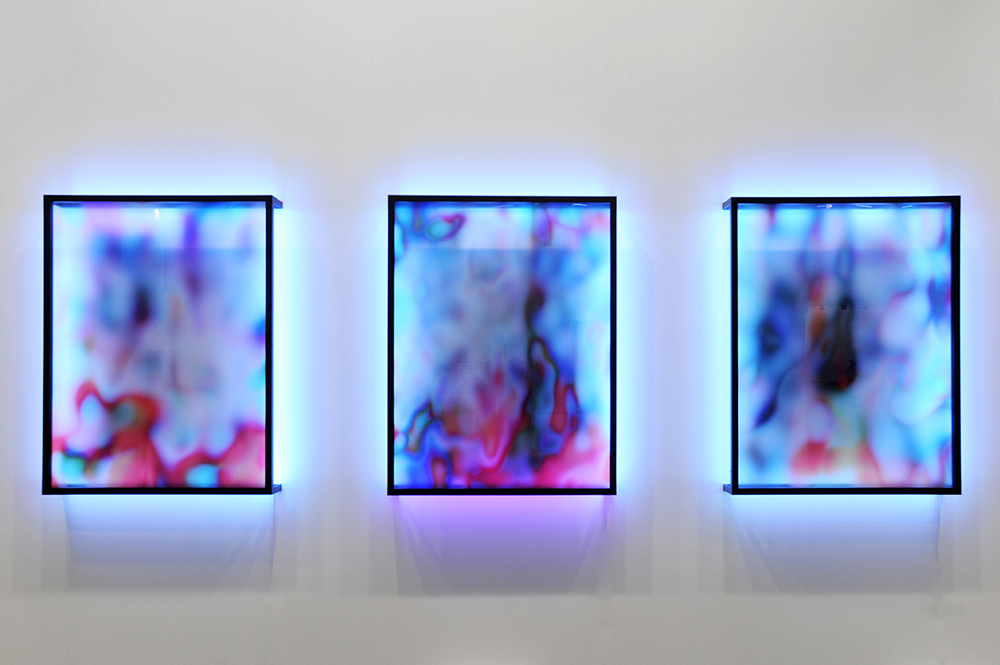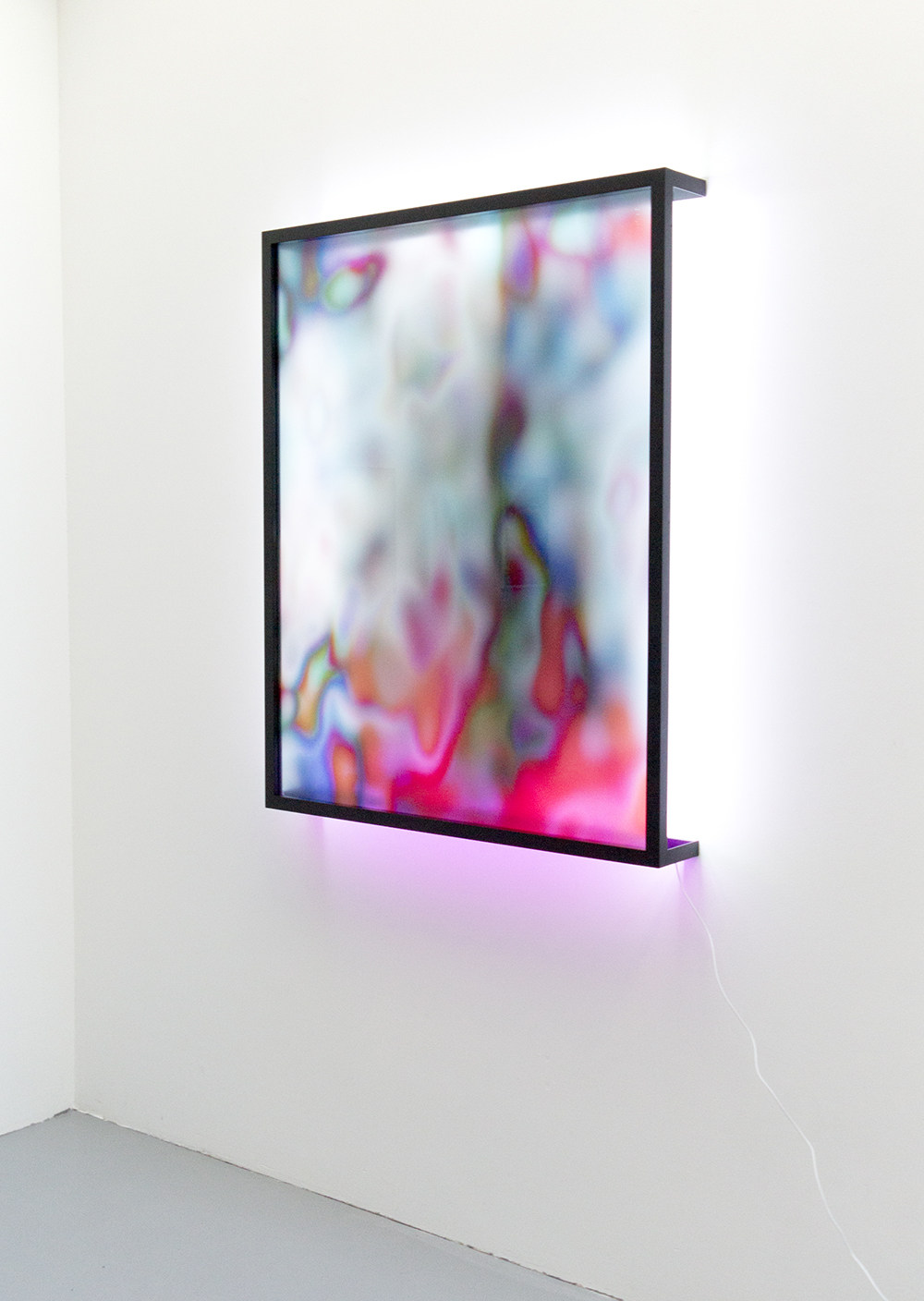Noémie Jennifer — Apr 19 2016
Earlier this month in Milan, Jonas Lund’s latest research shone through plexiglass panels in the Steve Turner booth at the Miart fair. Alongside a set of screens streaming online content seeking the next art market trend, and animations playing on obsolete LED monitors encased in concrete, Lund’s three illuminated digital paintings took center stage.
The works were developed with an algorithm that wires a work of art for success. Through a set of parameters, the piece’s visual content is optimized for an art fair. In the artist’s words: “This series is based on a neural network that has been trained on all my previous works, to outsource the process of making new work to an artificial semi-intelligent program that ‘thinks’ like me.”
The paintings are in line with Lund’s longstanding preoccupations. His VIP (Viewer Improved Painting) from 2014 tested different compositions and colors while tracking the viewer’s gaze, ultimately determining the most compelling visual arrangement. That same year, the artist produced a series of oil paintings based on an algorithm that processed the most successful works at a Phillips auction. Earlier work, such as Paintshop, a factory and marketplace for collaborative art, already tackled questions around art production and the market.
The work exhibited in Milan further the artist’s exploration of optimization practices, and is meant to offer more questions than answers. “What is an optimized artwork?” asks Lund. “A work that is set up for success to be liked by everyone, a work that stands out and creates diverging opinions, a work that sells, a work that asks the right questions at the right time, a work that gets 200 likes on Instagram, a work that makes you feel good?”
There is, of course, no right or wrong answer. “Through most of my research I’ve reached the conclusion that there is no formula to determine what constitutes an successful work of art, and that’s exactly the magic of a work of art—that it’s not measurable by typical quantification methods, so the gesture of creating these pieces speaks more towards the obsessions of optimizations through streamlining quantification and a big data centric way of thinking rather than trying to find a fixed solution.”
Appropriately, the intangible forms inside the paintings themselves seem to reflect a certain malleability, an unwillingness to fully mature into a final state. Illuminated with LED frames, they draw viewers near, but retain an air of mystery. Maybe keeping viewers guessing is one key to success.





